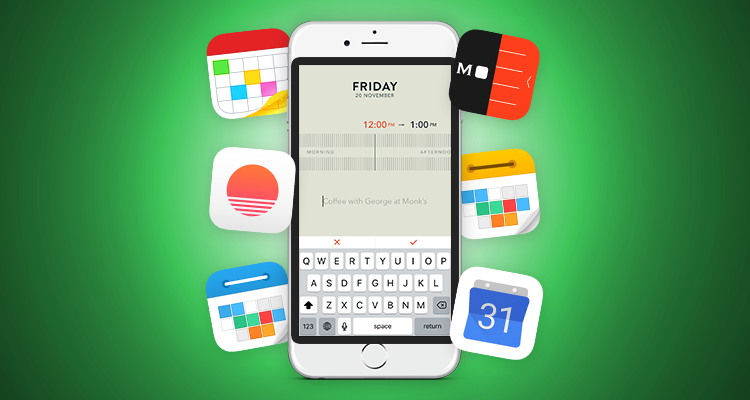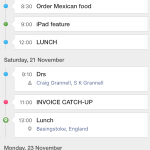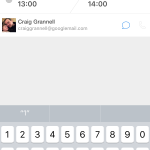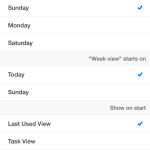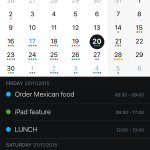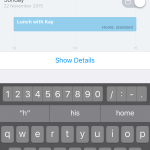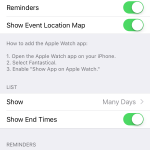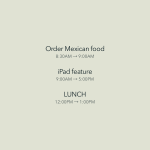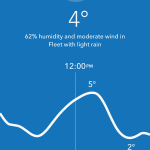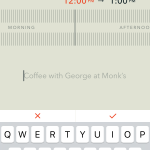We reveal our favorite apps to use in place of the standard Calendar app that comes with your iPhone
If you’re the organized type, you probably spend quite a lot of time in Apple’s Calendar app. And it’s not a bad mobile approximation of Apple’s desktop product. You get List, Day, Week and Month views, and accessing important information is reasonably simple.
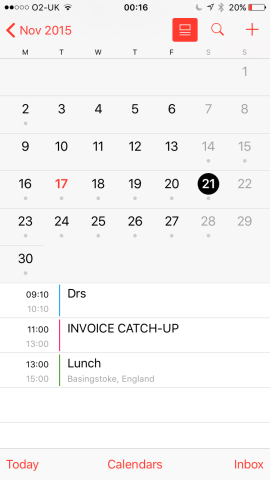
Apple’s Calendar has various view options, making it easier to get at event information.
However, third-party apps better Apple’s in key areas, such as you being able to more easily view events, and quickly create new ones. This round-up concentrates on three standout products we found when testing well over a dozen calendars. All of them work with your existing Calendar data, meaning you can easily switch between apps should you need to.
Calendars 5
$6.99/£4.99 • v5.8.0 • 35.4 MB • By Readdle
This app is the most conventional of our three picks, although it still doesn’t look an awful lot like Apple’s app. The main List view eschews ‘Jony Ive minimalism’ for a bunch of white event ‘tags’ on a grey background. These are connected to colored blobs at the left of the screen that denote the calendars the events belong to. Additionally, the bold text is easy to read, and the app utilises multiple lines well for invited contacts and locations. The result might not look as stylish as Apple’s effort, but it’s a lot more usable.
For the most part, this positivity extends to calendar navigation. A ticker exists at the foot of the screen, providing fast access to nearby relevant dates (days of the week in List or Day view, or adjacent months in Year view). The Day view is almost identical to the one in Apple’s Calendar, but Week and Month views are markedly different. The former chooses to display events in square blocks, and each day can be scrolled if there are too many events to fit on the screen. (A more typical week view is available in landscape.) The Month view ambitiously attempts to display up to five events for every visible day on your iPhone’s relatively small screen. These views feel messy, but they do offer a great means of scanning events over a long period of time. It is, however, slightly irksome to have to tap an expanding menu button to reach the buttons for accessing these views.
Event input broadly impresses. Calendars 5 has a decent stab at natural-language input, meaning you type in an event as you’d think about it in your head: ‘Lunch with Andy on Friday at 1–3’. While you’re tapping away, the app helpfully invites you to confirm which people you’re talking about, selecting from your contacts. It also has a stab at deciphering any locations you include. These expanded details are duly added to the event. The natural-language input isn’t quite as smart as Fantastical’s (Calendars 5 was stumped by ‘next week’, for example, and sometimes needed to be told 7 p.m. when we were planning a dinner), but asking for contact information while crafting the event makes up for any shortcomings. (The location stuff tends to be flakier.) The event pages are also smartly designed, very clearly showing all the salient information for any given event. Attendees can easily be contacted, and tapping a location instantly gives you a full-screen map.
There are some shortcomings. Calendars 5 has no Apple Watch app, and barely acknowledges Notification Center, merely enabling you to create a new event. But unlike Fantastical, this universal app means you don’t need to buy again if you own an iPad. On balance, we reckon it’s probably the best Calendar app on the iPhone, and certainly the top choice if you want something very familiar to use, but that’s more usable, useful and flexible than what Apple provides itself.
![]()
- No minimalism here. Instead: clarity.
- Natural-language input mostly works very well.
- You can override system view settings.
Fantastical
$4.99/£3.99 • v2.5.2 • 22.5 MB • By Flexibits Inc.
Fantastical is all about focus. It largely dispenses with multiple views, instead preferring you to access all your events from a single scrolling list. At the top of the screen, you get a day ticker that enables you to quickly snap to specific days. This also — not entirely successfully — attempts to provide an overview of each day’s events, primarily through colored lozenges representing calendar types.
The ticker can be dragged down to access a month view and also a search field. If you need a Week view, the app grudgingly provides one in landscape, although its formatting of multiple events at the same time leaves something to be desired.
Creating events is much better. Fantastical was the first app to really crack natural-language input, and it’s best-in-class in this respect. You can fashion quite complex phrases in various ways, and the app will still usually figure out what you mean. And because events are previewed as you type, you can always see when something’s not quite right. If it’d add in the location and attendee smarts found in Calendars 5, Fantastical would be just about perfect in this regard.
Elsewhere, Fantastical very clearly wants to be a good modern iOS citizen. There’s a superb Apple Watch app that allows you to add new events (unlike Apple’s), and iPhone 6s owners can use Peek and Pop gestures to preview events. The Today view widget is also quite substantial, showing a Month view and several of the day’s events. If there’s any downside to Fantastical, it can get a bit expensive if you want it everywhere — the separate iPad app is $9.99/£7.99, and the OS X one is $39.99/£29.99. But on iPhone alone, it’s perfectly affordable, and an excellent buy if you’re into efficiency and an app looking to the future rather than getting stuck in the present.
![]()
- The main view is built around efficiency.
- An event preview builds as you type.
- There are plenty of options for the Apple Watch app.
Moleskine Timepage
$4.99/£3.99 • v1.3 • 73.7 MB • By Moleskine Srl
Of our three main picks, Timepage is very much the oddball of the bunch. It boasts a varied and playful interface that’s a joy to interact with (assuming you get on with its many animations). The main scrolling events list gives you an overview of your week, and tapping on any individual day pops it to the fore. Events, when selected, provide you with all manner of information: time; location (including a map); how long it’ll take to drive, cycle or walk to a meeting; a weather forecast for the relevant time; and how much free time you’ll have until whatever you’ll be doing next. The day view gives you an hourly weather report accessed by grabbing the icon and scrubbing left and right.
For the most part, Timepage’s unconventional interface shines. The day view is unlike anything its contemporaries offer, but is clear and readable, albeit lacking identifiers for different calendar types. But occasionally, the app falters. The main list view is stymied by Timepage’s reluctance to show more than four events, meaning any packed days annoyingly animate between sets of information. Additionally, although the new-event screen has some natural-language smarts, it isn’t on a par with Calendars 5 nor Fantastical. And the lack of in-app search is baffling, although you can at least use Spotlight to get at your events.
Still, as a calendar app trying to do something a little bit different, Timepage is largely a success. And if you’re the kind of person who wants something colorful and fun, and who also only typically has a few events per day, it might even be the best pick of all.
- The Day view is very different from what you get in other calendar apps.
- Checking out the weather by dragging across the screen.
- Event input is a touch quirky, but works well.
Also consider…
Google Calendar
Free • v1.1.8 • 69.5 MB • By Google, Inc.
As with Google’s other iOS apps, Google Calendar is very smartly put together, Material Design looking quite at home on iOS. Events sometimes boast intelligent background imagery, helping them stand out. Its Week view is cramped, though, and there’s no landscape support.
Sunrise
Free • v4.21 • 24.7 MB • By Microsoft Corporation
Now part of the Microsoft stable, and boasting a really nice Apple Watch app, this ex-indie lets you switch between a List and elegant 3-Day view. It beats Apple’s Calendar for clarity and usability, but could do with better event input, if it’s going to trouble the best on the iPhone.
Calendars
Free • v5.7.5 • 36.0 MB • By Readdle
Essentially a freemium version of Calendars 5, this app gives you the basics, but lacks natural-language input, task (reminders) access, recurring events, and attendees. It’s handy for seeing whether you like the app in general though — or if you just want a decent free calendar.
